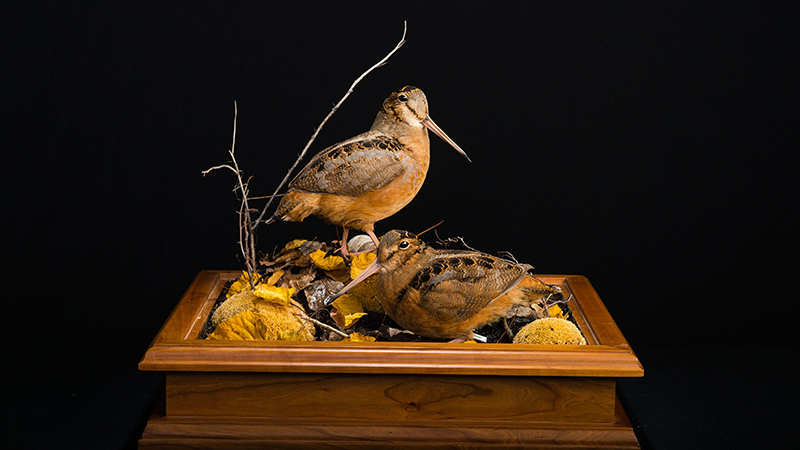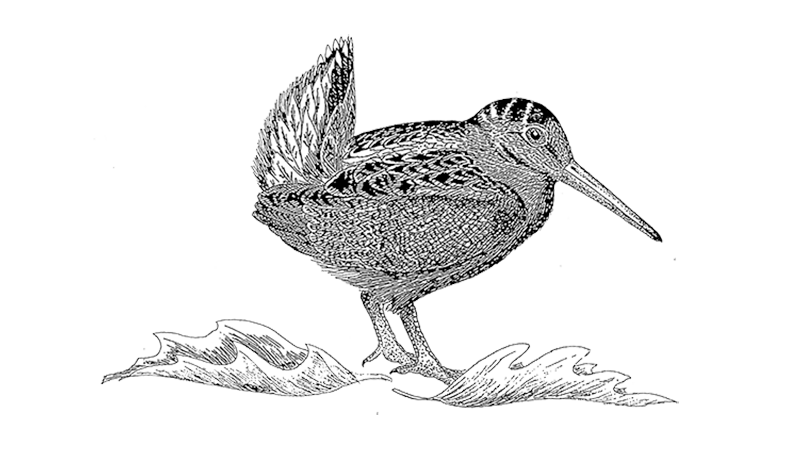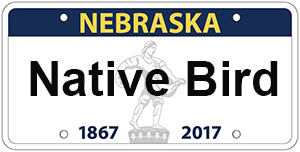American Woodcock

It seems that woodcocks are polygamous if not promiscuous and males apparently do not assist with brood rearing. After their spring arrival on the breeding grounds, males establish territorial singing grounds, from which they exclude other males and at which they perform dawn and dusk song flights.
The relatively rudimentary nest of the woodcock is built entirely by the female, often in sparse cover at the base of a shrub or small tree, or near the edge of a shrub thicket. The clutch normally contains four eggs. They are laid at a daily rate, and the incubation period of 20–21 days begins after the last egg is laid. During incubation the female is a notoriously "tight" sitter, relying on her effective camouflage to avoid detection. She feigns injury when forced from a hatching nest; and shortly after the chicks hatch, they will "freeze" rather than run when threatened. The young make their first flights when they are about two weeks old, and can fly well by three weeks. Broods probably break up some 6–8 weeks after hatching, and apparently the birds gradually migrate southward at low altitude in loosely scattered flocks. Evidently most woodcocks migrate to traditional wintering areas each year and return to their natal locations for breeding.

Regions Birds Are Found


Collection Location & Year
U.S. - Nebraska 2000
Taxonomy
| Order | Charadriiformes |
|---|---|
| Family | Scolopacidae |
| Species | Scolopax |
| Genus | minor |
Gender
Male
References
- Johnsgard, P. A. 1975a. North American Game Birds of Upland and Shoreline. Lincoln, NE: Univ. of Nebraska Press.
- Johnsgard, P. A. 1981. The Plovers, Sandpipers and Snipes of the World. Lincoln, NE: Univ. of Nebraska Press.
- del Hoyo, J. A. Elliot, and J. Sargatal, eds. 1996. Handbook of Birds of the World. Vol. 3 (Hoatzin to Auks). Barcelona: Lynx Editions.